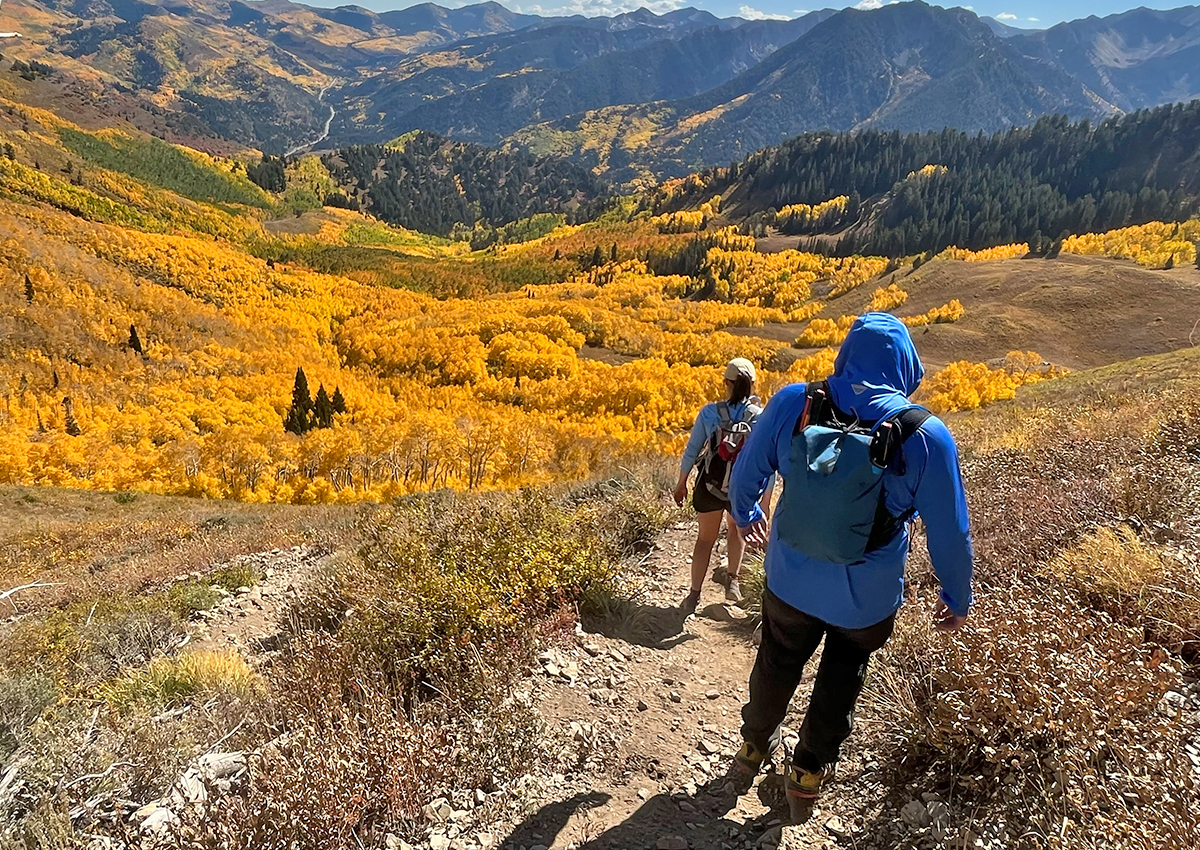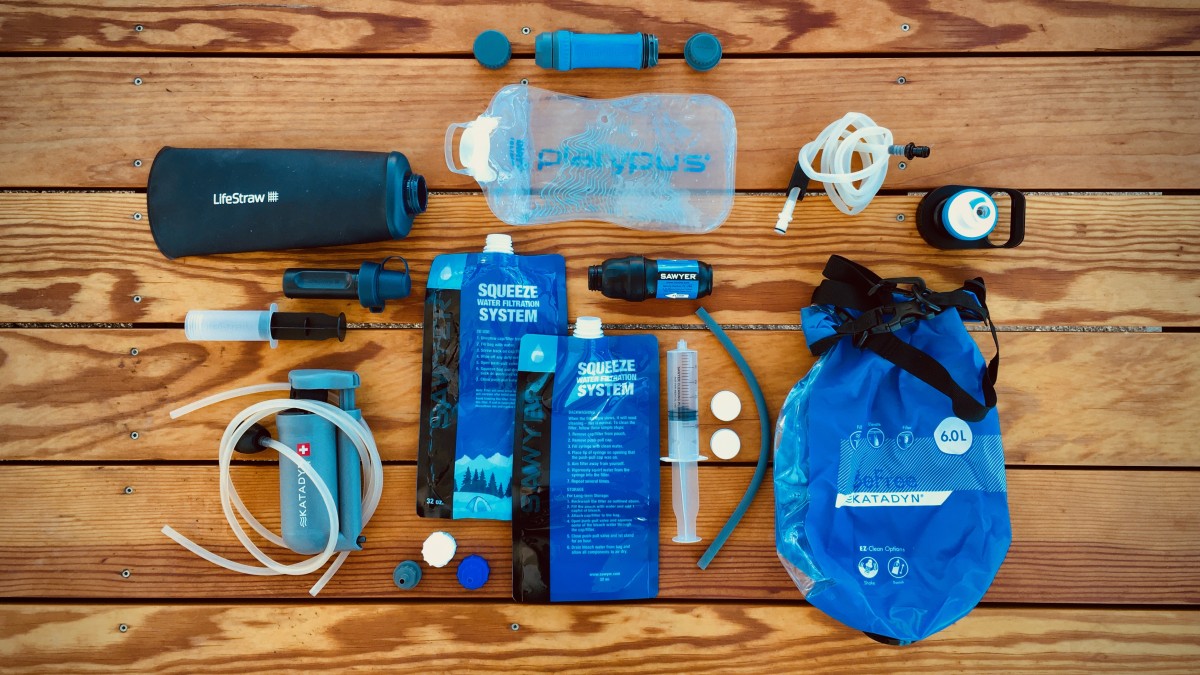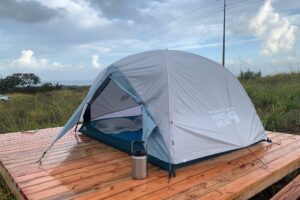Backpackers can ensure safe hydration on the trail with water purification methods such as boiling, filtration, and chemical treatment. As backpackers venture into the wilderness, it’s essential to stay hydrated, especially if they plan to tackle challenging and strenuous terrains.
While natural sources of water are abundant, they are not always safe for consumption. Drinking untreated water can lead to illnesses and infections caused by waterborne pathogens. Therefore, it’s essential to purify water before drinking it. Luckily, backpackers can choose from several water purification methods, including boiling, filtration, and chemical treatment.
Each method comes with its advantages and disadvantages when it comes to weight, cost, and effectiveness. This article will cover the different water purification methods to help backpackers decide which method best suits their needs.

Credit: www.outdoorlife.com
Understanding The Risks Of Drinking Untreated Water In The Wilderness
Water is essential for life, but when it comes to drinking untreated water in the wilderness, it can be hazardous to your health. Many backpackers make the mistake of drinking from a stream or river without knowing the risks. In this blog post, we’ll discuss the dangers of consuming untreated water while hiking, how waterborne illnesses occur, and the importance of learning about local water sources before setting out.
What Are The Dangers Of Consuming Untreated Water While Hiking?
Drinking untreated water while hiking can lead to a variety of health risks such as:
- Gastrointestinal issues
- Diarrhea
- Vomiting
- Dehydration
- Cramps
- Fever
- Fatigue
- Headaches
- Kidney failure
The reasons behind these dangers are the presence of pathogens, chemicals, and heavy metals in the water.
How Do Waterborne Illnesses Occur, And What Are Their Symptoms?
Waterborne illnesses occur due to the ingestion of water contaminated with pathogens such as bacteria, viruses, or parasites. These pathogens can cause gastrointestinal issues and lead to waterborne illnesses such as:
- Giardiasis
- Cryptosporidiosis
- Cholera
- Dysentery
- E. coli infections
- Hepatitis a
- Typhoid fever
The symptoms of these illnesses include:
- Diarrhea
- Nausea
- Vomiting
- Abdominal cramps
- Fever
- Dehydration
The Importance Of Learning About Local Water Sources Before Setting Out
Before heading out on a hike, it’s essential to research the local water sources in the area. Knowing where to find water sources and what type of water source is available is crucial. Here are a few things to consider when researching local water sources:
- Is the water from a stream, river, or lake?
- Is the water source prone to contamination from animal fecal matter?
- Are there any mining operations or industry nearby that would contaminate the water source?
- Are there any water treatment facilities available along the trail?
Treating water while hiking is crucial for safe hydration. By being aware of the risks involved in drinking untreated water, learning about waterborne illnesses, and researching water sources before heading out, backpackers can protect their health and stay hydrated while on the trail.
Comparison Of Water Purification Methods For Backpackers
Water purification methods for backpackers: ensuring safe hydration on the trail
Safe hydration is essential when hiking or camping. Unfiltered water may contain harmful bacteria, protozoa, and viruses that can make you sick. That’s why it’s crucial to use water purification methods to protect yourself from waterborne illnesses. In this post, we’ll discuss the most effective water purification methods for backpackers.
Boiling: The Most Traditional And Foolproof Method For Purifying Water
Boiling is the most reliable and traditional method of purifying water. It eliminates bacteria, viruses, and protozoa that may cause diseases. To use this method, you’ll need to find a heat source, like a stove or a fire.
- Bring the water to a rolling boil for 1-3 minutes to kill any pathogens present.
- Let the water cool down before drinking.
- Note that boiling does not remove particulates or chemicals from the water.
Filtration: Using Portable Filters To Eliminate Harmful Bacteria And Protozoa
Filtration is an easy and convenient way to purify water. It’s ideal for backpackers who need a lightweight, portable method. Water filters remove harmful bacteria, protozoa, and some viruses from the water.
- Choose a portable filter with a pore size of 0.2 microns or less to eliminate bacteria and protozoa effectively.
- Consider the filter’s flow rate, durability, and ease of use when selecting a water filter.
- Filters can become clogged over time, causing them to lose effectiveness.
Chemical Treatment: Using Tablets Or Drops To Destroy Pathogens In Water
Chemical treatment is an affordable and straightforward method of purifying water. It involves using chemical tablets or drops to kill the harmful pathogens present in the water.
- Chemical treatments kill bacteria, protozoa, and viruses.
- Be sure to follow the manufacturer’s instructions when using chemical treatments.
- Chemical treatments can sometimes leave an aftertaste on the water or cause side effects like diarrhea.
Ultraviolet (Uv) Purification: Using Special Devices To Treat Water With Uv Light
Uv purification is a high-tech and reliable method of water treatment. It uses special devices to treat water with uv light, eliminating harmful pathogens.
- The uv light destroys bacteria, viruses, and protozoa, rendering them unable to replicate.
- Be sure to choose a lightweight and portable uv light device.
- Water with high levels of particulates or sediments can block the uv light, rendering the device ineffective.
Choosing one of the above water purification methods for backpackers will help ensure you have safe hydration on the trail. Remember to research and choose a method that fits your needs and preferences. Stay hydrated and stay safe!
Factors To Consider When Choosing A Water Purification Method
Water purification methods for backpackers: ensuring safe hydration on the trail
As a backpacker, planning your trip and packing the necessary equipment is crucial to a successful outdoor adventure. Safe hydration is paramount, and choosing the right water purification method ensures that your drinking water is free of harmful pathogens. There are several factors to consider when selecting a water purification method, including effectiveness, weight and size of equipment, convenience, portability, ease of use, cost, and long-term sustainability.
The Effectiveness Of Each Method Against Different Pathogens
- Boiling water for at least 1 minute is effective against bacteria, viruses, and protozoa, but it requires fuel and is time-consuming.
- Chemical treatments, such as chlorine dioxide tablets, are effective against bacteria and viruses but may not be as effective against protozoa, and can leave an unpleasant taste in the water.
- Filters, both pump and gravity-based, are effective against bacteria and protozoa, but not viruses, unless used in conjunction with chemical treatment or a specific virus filter.
- Uv water purifiers effectively kill all three types of pathogens but require batteries and may not be as effective in turbid water.
The Weight And Size Of Equipment Required For The Method
- Boiling water requires a stove and fuel, making it one of the heaviest and bulkiest options.
- Chemical treatments are lightweight and compact, with tablets easily fitting into a small container or pocket.
- Filters can range from lightweight and small to bulky and heavy, with gravity-based filters being more portable and pump filters being more efficient.
- Uv water purifiers are relatively compact and lightweight, but require batteries.
The Convenience, Portability, And Ease Of Use Of Each Treatment Option
- Boiling water is a time-consuming and fuel-dependent method, but it requires minimal setup and is easy to use.
- Chemical treatments are easy to use and quick, requiring no setup, but water must sit for a certain amount of time before consumption.
- Filters can be easy or difficult to use depending on the type, with gravity-based filters being the most convenient and efficient in terms of effort.
- Uv purifiers are simple to use but require batteries and can be affected by cloudy or turbid water.
Cost Considerations And Long-Term Sustainability
- Boiling water is a cost-effective and sustainable option, but requires a stove and fuel.
- Chemical treatments are relatively inexpensive but require ongoing purchases and generate waste.
- Filters can be expensive upfront but have long-term sustainability and minimal waste.
- Uv water purifiers are costly upfront and require ongoing purchases of batteries, but they have long-term sustainability and minimal waste.
The water purification method you choose for your backpacking trip will depend on various factors, including effectiveness, weight and size of equipment, convenience, portability, ease of use, cost, and long-term sustainability. By considering these factors and selecting the most appropriate method for your needs, you can ensure safe hydration on the trail and a successful outdoor adventure.
Conclusion
As a backpacker, you know that having access to safe drinking water is an essential part of staying healthy and hydrated on the trail. With the many water purification methods available, it can be overwhelming to choose the best one for your needs.
Whether you opt for boiling, chemical treatment, or a filtration system, be sure to carefully research your options and choose the one that best suits your needs. Make sure to prioritize a lightweight and portable option that can be easily carried on your backpacking trip.
Above all, follow the instructions on your chosen water purification method carefully to ensure that you are getting the most effective results. By taking the time to choose the right water purification method and utilizing it properly, you can ensure that you stay hydrated and healthy during your backpacking adventures.




